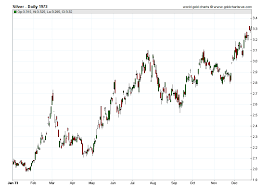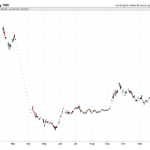This article delves into the daily fluctuations and historical data of silver prices in 1973, a year marked by significant economic turmoil and the devaluation of the US dollar.
The year witnessed a loss of -10% of the US dollar’s value to other fiat currencies overnight, leading to price control measures and daily fluctuations in silver prices.
The data for this article is derived from SD Bullion and LBMA silver price fix history, containing 84 price points listed in chronological order, providing a comprehensive understanding of the trends and patterns in silver prices during this period.
The devaluation of the US dollar in 1973 had a significant impact on global economies and financial markets, leading to price control measures and fluctuations in commodity prices, including silver.
The daily silver price fix data for January to July 1973 and daily prices from July 11 to December 31, 1973, provide valuable insights into the trends and patterns in silver prices during this period.
This article aims to objectively analyse the data and explore the daily fluctuations and historical data of silver prices in 1973, providing a comprehensive understanding of the impact of economic turmoil on commodity prices.
US Dollar Devaluation
In early 1973, the US dollar experienced a significant devaluation, losing 10% of its value to other fiat currencies overnight. This had a notable impact on the daily fluctuations and historical data of silver prices during that year.
The devaluation of the US dollar had a ripple effect on global trade, as other countries were forced to re-evaluate their trading relationships with the United States. Inflationary pressures also began to mount, driving up the demand for hard assets like silver as a hedge against inflation.
The devaluation of the US dollar led to a surge in demand for silver as investors sought to protect their wealth from the effects of inflation. This resulted in daily fluctuations in the price of silver, which continued throughout the year.
As the US dollar continued to lose value, the price of silver rose, reaching a high of $3.20 per ounce on December 20, 1973. The devaluation of the US dollar also had a long-term impact on the price of silver, as investors continued to see it as a safe haven asset in times of economic uncertainty.
Price Control Measures
Implementation of price control measures was attributed to poor weather conditions by President Nixon, despite the devaluation of the US dollar, which had lost -10% of its value to all other competing fiat currencies overnight in the middle of February 1973, causing economic turmoil and uncertainty for the American people.
The price control measures were part of the government’s broader strategy to tackle inflation, which was a major concern at the time. While the government intervention was meant to curb inflation, it had a significant impact on the silver market, especially on the prices of silver bullion.
The price control measures led to a shortage of silver bullion in the market as the government imposed limits on the prices that could be charged for silver and also restricted the amount of silver that could be held by individuals. This resulted in an increase in the demand for 90% silver coins, which were exempted from the price control measures.
As a result, the prices of 90% silver coins increased substantially, making them the most accessible and widespread route to acquire silver bullion savings. Overall, the government’s intervention had a significant impact on the silver market, affecting the prices of silver bullion and the availability of silver in the market.
Daily Silver Price Fluctuations
Throughout the year 1973, the value of silver experienced daily fluctuations due to various economic factors impacting the market.
Historical silver prices data from SD Bullion shows that silver prices ranged from $1.96 per ounce to $3.26 per ounce during this period. The data reveals that silver prices reached a high of $3.20 per ounce on December 20, 1973, and a low of $2.52 on September 13, 1973.
The fluctuation in silver prices throughout the year was influenced by a number of factors, including the devaluation of the US dollar, which lost 10% of its value to all other competing fiat currencies overnight in middle February 1973.
Additionally, silver prices increased in October and December, while remaining relatively stable in November. These silver market trends highlight the importance of understanding the historical silver prices and factors that impact the market when investing in physical precious metal bullion products.
Frequently Asked Questions
What was the global demand for silver in 1973 and how did it affect its price?
The global demand for silver in 1973 was driven by industrial and investment purposes. Supply chain disruptions, such as strikes and mine closures, affected the supply of silver, contributing to its fluctuating prices during the year.
How did the silver market in 1973 compare to other precious metal markets, such as gold or platinum?
Investor sentiment and market competition influenced the silver market in 1973. Compared to gold and platinum, silver was more accessible through 90% silver coins. Price controls were implemented, blaming poor weather, and the US dollar was devalued.
What were some of the major political events or economic factors that impacted silver prices in 1973?
The 1973 oil crisis and Nixon’s economic policies were major political and economic factors that impacted silver prices. The devaluation of the US dollar in early 1973 and the implementation of price control measures also played a role.
How did the availability of physical silver bullion products differ in 1973 compared to present day?
The availability of physical silver bullion products in 1973 was limited compared to present day due to market saturation. The demand for silver bullion was primarily met through 90% silver coins, which were widely accessible and considered the easiest route for silver bullion savings.
What were some of the popular investment strategies for silver in 1973, and how have they evolved over time?
Investment trends for silver in 1973 included hoarding of 90% silver coins, as it remained the easiest and most accessible route for acquiring silver. Market fluctuations were influenced by the devaluing US dollar and price control measures implemented by President Nixon. Investment strategies for silver have evolved over time, with modern options including ETFs and digital platforms.





